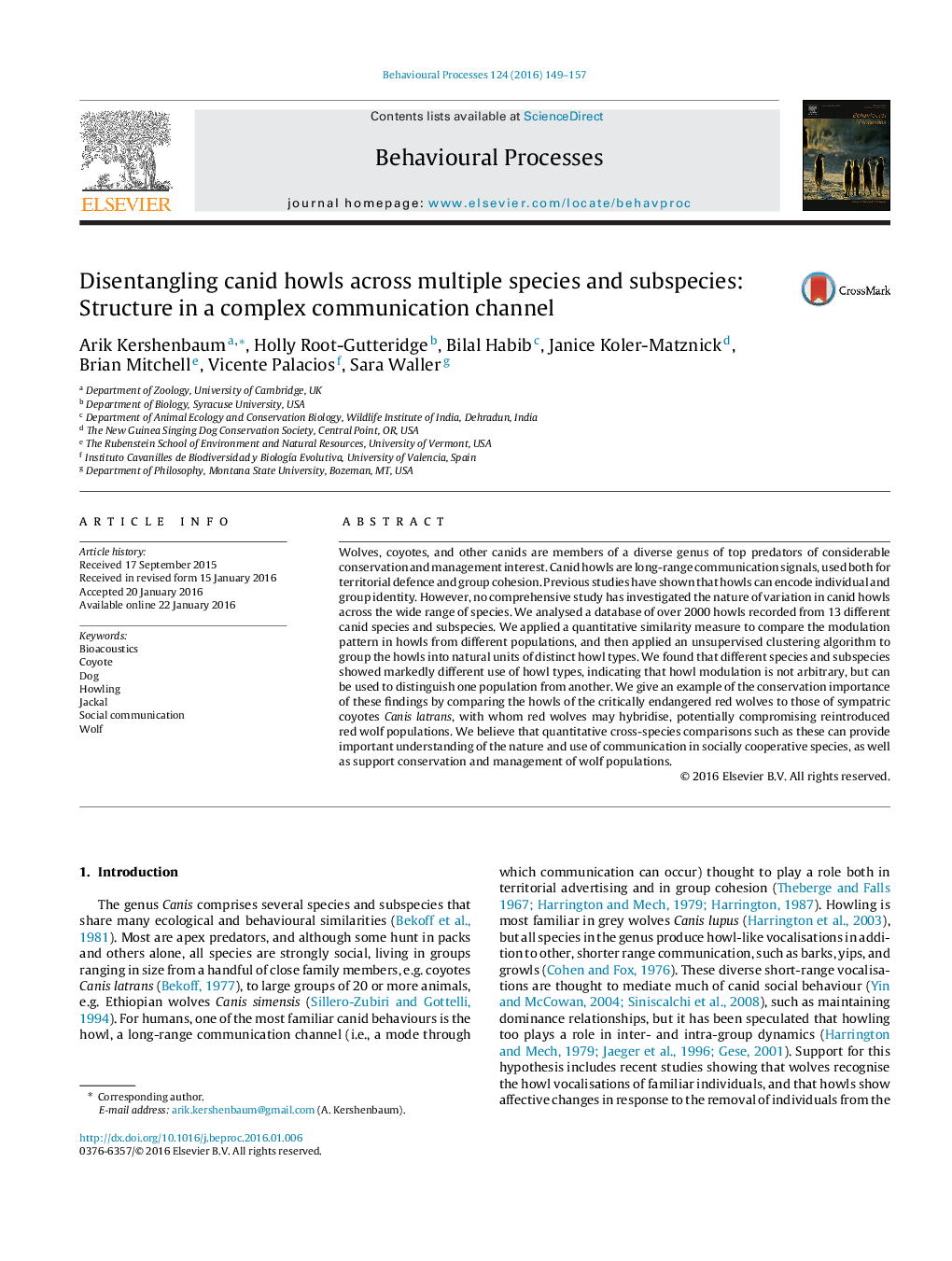| Article ID | Journal | Published Year | Pages | File Type |
|---|---|---|---|---|
| 2426466 | Behavioural Processes | 2016 | 9 Pages |
•Wolves and other canids pose major conservation and management challenges.•Howling is an important behaviour for all canid species.•We analysed over 2000 howls from 13 species and subspecies of wolves, coyotes, etc.•Quantitative methods showed different species use different patterns of howl types.•Understanding howl type usage is important both for conservation and management.
Wolves, coyotes, and other canids are members of a diverse genus of top predators of considerable conservation and management interest. Canid howls are long-range communication signals, used both for territorial defence and group cohesion. Previous studies have shown that howls can encode individual and group identity. However, no comprehensive study has investigated the nature of variation in canid howls across the wide range of species. We analysed a database of over 2000 howls recorded from 13 different canid species and subspecies. We applied a quantitative similarity measure to compare the modulation pattern in howls from different populations, and then applied an unsupervised clustering algorithm to group the howls into natural units of distinct howl types. We found that different species and subspecies showed markedly different use of howl types, indicating that howl modulation is not arbitrary, but can be used to distinguish one population from another. We give an example of the conservation importance of these findings by comparing the howls of the critically endangered red wolves to those of sympatric coyotes Canis latrans, with whom red wolves may hybridise, potentially compromising reintroduced red wolf populations. We believe that quantitative cross-species comparisons such as these can provide important understanding of the nature and use of communication in socially cooperative species, as well as support conservation and management of wolf populations.
Graphical abstractFigure optionsDownload full-size imageDownload as PowerPoint slide
